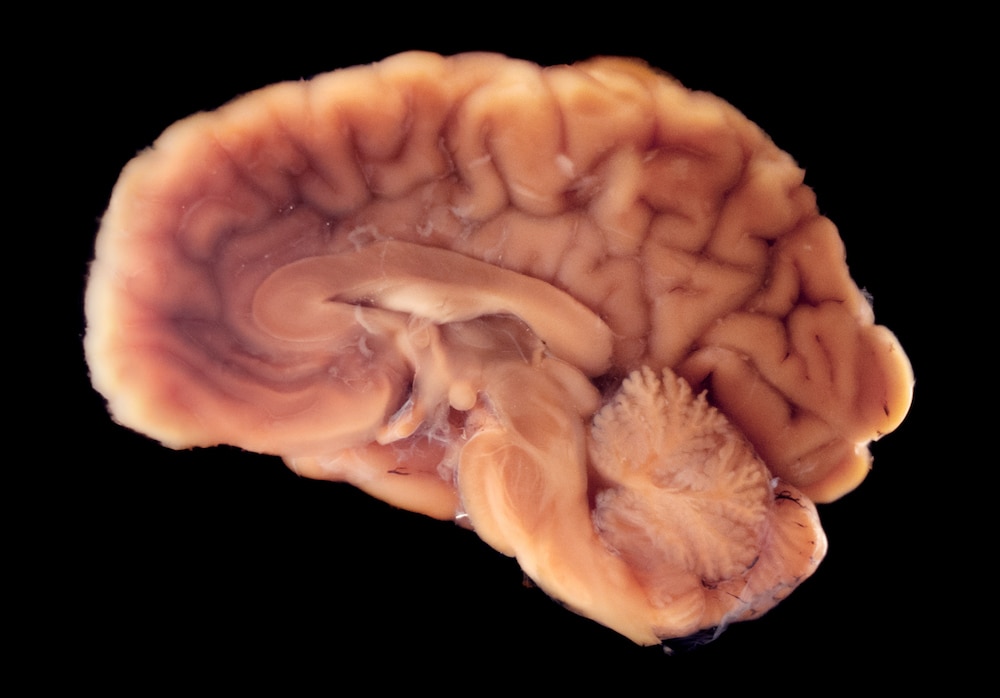Create a free profile to get unlimited access to exclusive videos, sweepstakes, and more!
Pig Brain Kept Alive for Five Hours While Separated from the Body
Who needs a body when you have modern medicine?

Mary Shelley’s classic novel Frankenstein has achieved what its titular character set out to do by attaining pop culture immortality. It has been adapted, either directly or through interpretation, more than 160 times since publication. One of the most faithful adaptations is the 2004 two-episode miniseries (streaming now on Peacock) starring Alec Newman as the good doctor and Luke Goss as the Creature.
In it, the infamous Victor Frankenstein creates a method of restoring the dead to life. After testing his method on animals, he crafts a person from organs and other body parts pilfered from corpses. A body, human or otherwise, is made of many components, but the most important is the brain. It serves as the control center for the rest of the body and the seat of consciousness. A better understanding of how it works might have helped Dr. Frankenstein to avoid some of his mistakes and, in the real world, it could revolutionize medical science.
RELATED: Bringing Pigs Back from the Dead. Are Humans Next?
To that end, researchers from the University of Texas Southwestern Medical Center have created a procedure and device capable of separating the brain from the rest of the body and keeping it alive for hours at a stretch. Their work was recently published in the journal Scientific Reports.
Scientists Keep Pig Brains Alive While Separated from the Body
Keeping a brain alive and functioning while isolated from the rest of the body has a seemingly infinite number of sci-fi medical applications in addition to being a boon to medical research. The challenge is keeping the brain supplied with blood, oxygen, and nutrients in a way similar to how the body does it. The new study uses a process called Extracorporeal pulsatile circulatory control (EPCC) to achieve its goal, and by all accounts, it works wonderfully.
The major benefit is in allowing researchers to study brain function without any signal noise from the rest of the body. This particular study was focused on how glucose (or a lack of it) impacts brain function. In typical studies, researchers attempt to manipulate blood sugar levels through dietary changes and insulin injections, but the body has ways of correcting for that and altering the brain’s behavior, potentially muddying experimental results. With the new setup, researchers can manipulate those inputs directly in a controlled, if horrifying, way.
RELATED: Brains could soon have their own periodic table of neurons
“This novel method enables research that focuses on the brain independent of the body, allowing us to answer physiological questions in a way that has never been done,” said Dr. Juan M. Pascual, one of the study authors, in a statement.
Scientists surgically separated blood flow to a pig’s head from the rest of its body and switched it over to the EPCC device. Once hooked up, the machine uses software to monitor and maintain blood flow and blood pressure for a span of five hours or more. Researchers cut off the experiment after five hours, but the data suggests they could have gone longer.
Meanwhile, researchers used implanted electrodes to record brain activity, in addition to direct visual observation. They found that brain activity remained largely unaltered as compared to ordinary conditions. The team behind the study noted that it could unveil new information about the brain’s inner workings that might apply to human medical therapies.
It might even be possible, someday, for your brain to be removed and maintained long enough for you to become the controlling consciousness of your corpse conglomeration. But we kind of hope not.
Catch the two-part miniseries Frankenstein, streaming now on Peacock.



























